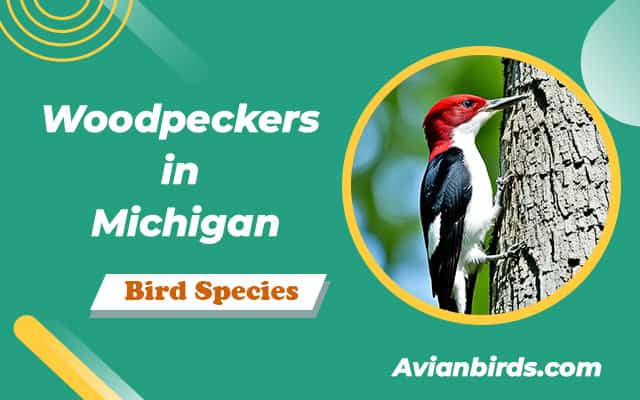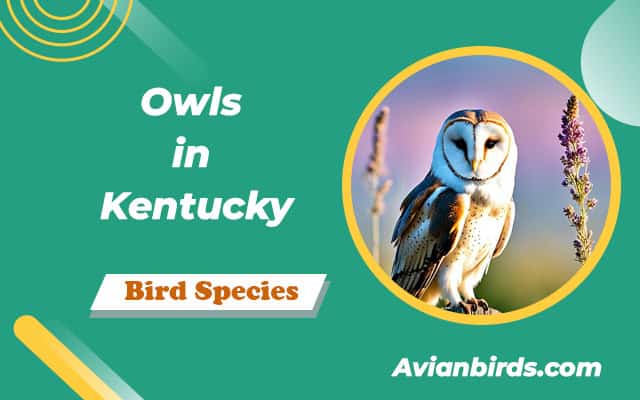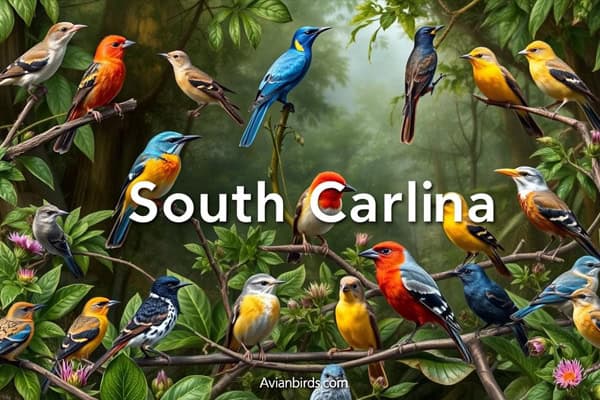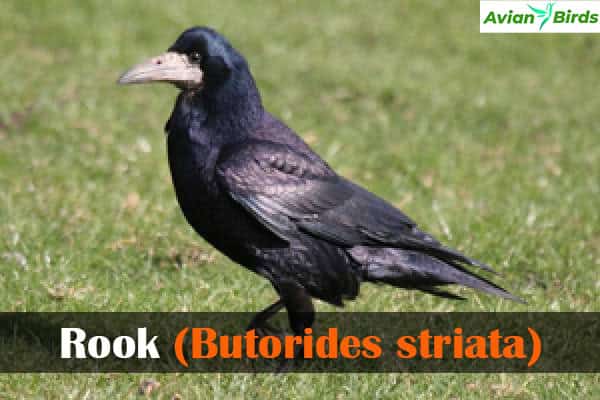Owls In Oregon (14 Species & Where To See Them)
Did you know Oregon has 14 types of owls? These birds can be found in different parts of the state. The Great Horned Owl has a huge wingspan of up to 5 feet, and the Northern Saw-whet Owl is very common in forests.
These amazing birds can be seen at night. They also play a big role in our ecosystem. We’ll find out where to watch them and how to protect them.
Let’s learn more about Oregon’s owls. We’ll see how we can help keep their homes safe for future generations.
Introduction to Owls in Oregon
Owls are fascinating in Oregon’s rich landscapes. They show us how birds adapt and play key roles in nature. Learning about their behaviour and ecology shows us why owls are vital to their habitats.
The Fascinating World of Nocturnal Birds
Nocturnal birds, like owls, have amazing adaptations for the dark. They see well at night and fly quietly. This lets them hunt small mammals and insects with ease.
Owls are expert hunters because of their night habits. They are important in their ecosystems.
Importance of Owls in Ecosystem
Owls do more than hunt. They keep prey populations in check, which helps nature stay balanced. In Oregon, different owl species have unique roles in their homes.
Understanding their nesting, diet, and hunting helps us see their place in nature.
Overview of Owl Species Found in Oregon
Oregon is home to 14 different owl species. These birds live in many places, from coastal forests to high deserts. Each owl plays a key role in keeping our environment balanced.
Let’s look at the variety of owls and what makes them special.
Diversity of the Owl Population
Oregon’s owls are both beautiful and important. The Great Horned Owl is the most common, growing up to 22 inches tall and weighing 3.1 pounds. The Great Gray Owl is rare but found in the northwestern parts.
The Barn Owl has a unique heart-shaped face and weighs about one pound. It lays 2 to 18 eggs at a time. This shows how different owls can be.
The northern pygmy owl is tiny, weighing only 2.5 ounces and having a wingspan of 12 inches.
Common Characteristics of Owls
Owls are amazing hunters. They use their sharp eyes and ears to find prey in the dark, and their silent flight lets them sneak up on their prey.
Each owl has its own call. These calls help them mark their territory and find a mate. Most owls live in Oregon all year, but some migrate.
Every owl has special features for its home. This helps them survive in different places.
Owls of Oregon: 14 Unique Species
Oregon is home to many owl species, Also, each with its own special traits and ways of adapting. From the well-known Great Horned Owl to the rare Northern Spotted Owl, these birds are key to our ecosystem. Let’s look at the different owl species found in Oregon.
1. Great Horned Owl
- Scientific Name: Bubo virginianus
- Size: 45–63 cm (18–25 in)
- Weight: 1.4–2.6 kg (3–5.8 lb)
- Diet: Primarily small mammals and birds.
The Great Horned Owl of Oregon is easy to spot in Oregon. It has tufted ears and a striking look. It’s 17 to 25 inches long. This bird lives in forests and cities and eats small mammals, birds, and reptiles.

2. American Barn Owl
- Scientific Name: Tyto furcata
- Size: 33–39 cm (13–15 in)
- Weight: 400–700 g (0.88–1.54 lb)
- Diet: Primarily small mammals, especially rodents.
The Barn Owl has a heart-shaped face. It is found west of the Cascades. It is about 11 to 17 inches long and eats small rodents. Its silent flight helps control rodent numbers.
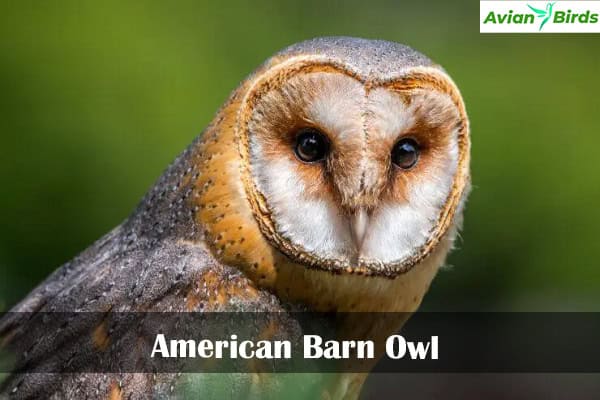
3. Barred Owl
- Scientific Name: Strix varia
- Size: 40–63 cm (16–25 in)
- Weight: 500–1,400 g (1.1–3.1 lb)
- Diet: Primarily small mammals, birds, and amphibians.
The Barred Owl, known for its hooting call, has been in Oregon for 50 years. It’s 16 to 25 inches long and lives in forests, competing with the northern spotted owl.
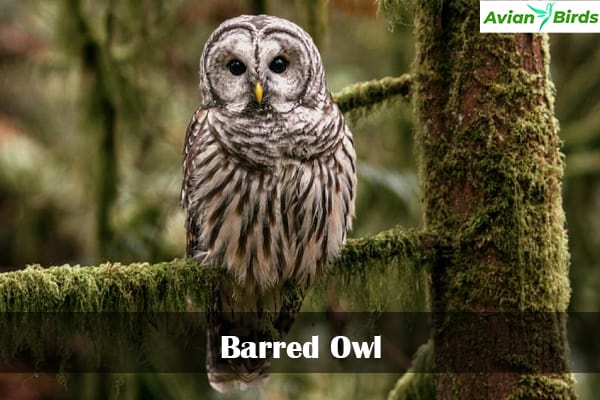
Must Read: Owls in Massachusetts
4. Short-eared Owl
- Scientific Name: Asio flammeus
- Size: 33–43 cm (13–17 in)
- Weight: 200–500 g (7–18 oz)
- Diet: Primarily small mammals, especially voles
The Short-eared Owl lives in wetlands, especially in the Cascades. It’s 13 to 17 inches long. It glides low to the ground to hunt.
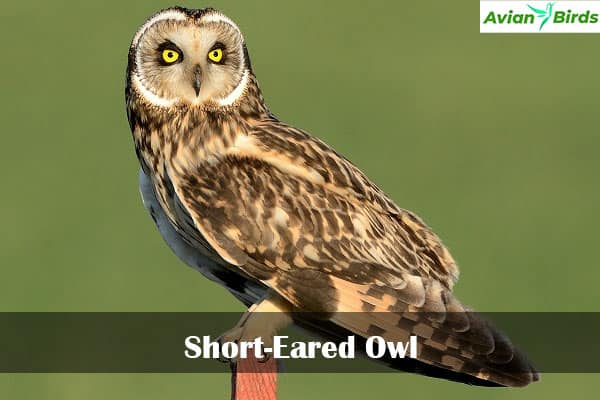
5. Long-eared Owl
- Scientific Name: Asio otus
- Size: 33–40 cm (13–16 in)
- Weight: 300–600 g (10.6–21.2 oz)
- Diet: Primarily small mammals, especially voles
The Long-eared Owl has tufts above its eyes. It is 12 to 16 inches long and lives in dense woods, mostly east of the Cascades. Its camouflage helps it hide.
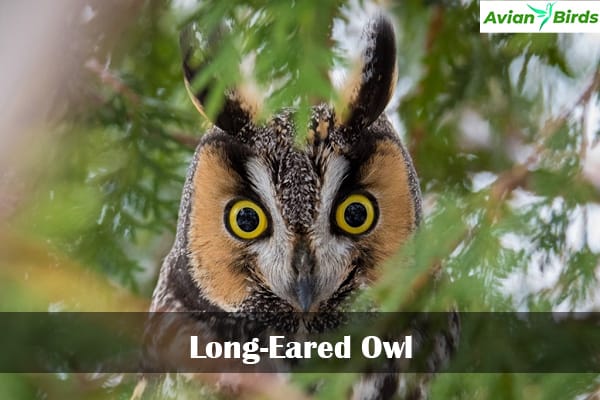
6. Northern Saw-whet Owl
- Scientific Name: Aegolius acadicus
- Size: 18–23 cm (7–9 in)
- Weight: 70–150 g (2.5–5.3 oz)
- Diet: Primarily small mammals, especially mice
The Northern Saw-whet Owl is small, about 6.5 to 9 inches long. It’s found all over Oregon except the southeast. It’s great at hearing and lives in dense forests.
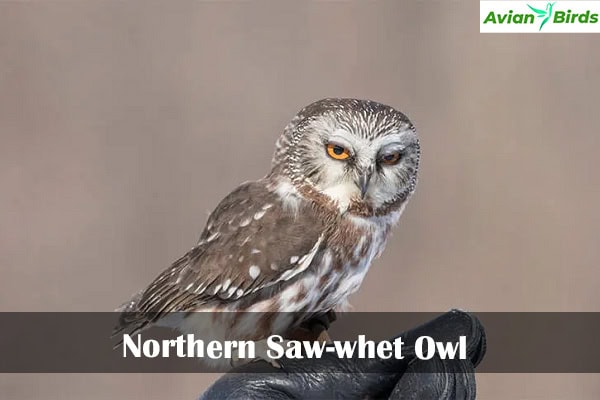
7. Burrowing Owl
- Scientific Name: Athene cunicularia
- Size: 19–28 cm (7.5–11 in)
- Weight: 150–300 g (5.3–10.6 oz)
- Diet: Primarily insects and small mammals.
The Burrowing Owl is special because it nests in underground burrows. It’s found in eastern Oregon. It’s 7.5 to 11 inches long and hunts during the day.

8. Flammulated Owl
- Scientific Name: Psiloscops flammeolus
- Size: 20–23 cm (7.9–9.1 in)
- Weight: 70–150 g (2.5–5.3 oz)
- Diet: Primarily insects, especially moths
The Flammulated Owl is the smallest owl in North America. It’s 6 to 8 inches long. It eats insects and lives in Oregon’s mountains.

Must Read: Owls in Africa
9. Western Screech-Owl
- Scientific Name: Megascops kennicottii
- Size: 24–28 cm (9.4–11 in)
- Weight: 150–250 g (5.3–8.8 oz)
- Diet: Primarily insects and small mammals
The Western Screech-Owl is rarely seen but often heard. It lives in western Oregon, below 3,000 feet, and its trill fills the night air.
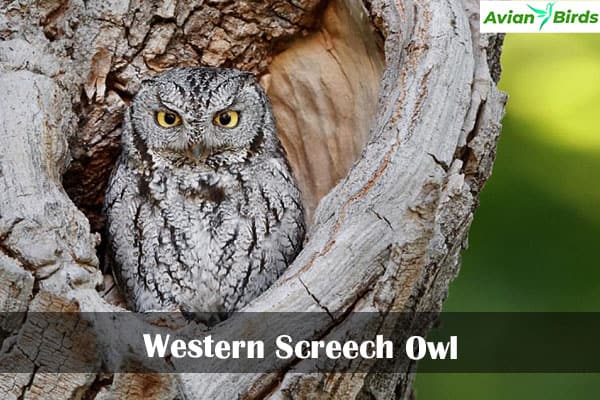
10. Snowy Owl
- Scientific Name: Bubo scandiacus
- Size: 51–66 cm (20–26 in)
- Weight: 1.6–2.9 kg (3.5–6.4 lb)
- Diet: Primarily small mammals, especially lemmings
The Snowy Owl is the largest owl in North America. It occasionally visits Oregon. It lives in the Arctic but comes down in winter.

11. Northern Pygmy Owl
- Scientific Name: Glaucidium gnoma
- Size: 15–19 cm (5.9–7.5 in)
- Weight: 60–120 g (2.1–4.2 oz)
- Diet: Primarily small mammals, birds, and insects
The northern pygmy owl is bold and aggressive. It is about 6 to 7 inches long and lives in forests, hunting small birds and mammals.
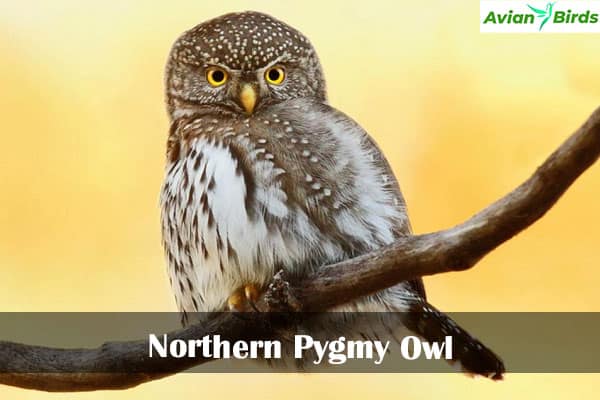
Also, read: Owls in Minnesota
12. Great Gray Owl
- Scientific Name: Strix nebulosa
- Size: 61–84 cm (24–33 in)
- Weight: 0.8–2.5 kg (1.8–5.5 lb)
- Diet: Primarily small mammals, especially voles
The Great Gray Owl is Oregon’s tallest owl. It’s 24 to 32 inches tall. It lives in old forests, using its hearing to find prey under the snow.

13. Boreal Owl
- Scientific Name: Aegolius funereus
- Size: 25–30 cm (9.8–11.8 in)
- Weight: 150–240 g (5.3–8.5 oz)
- Diet: Primarily small mammals, especially voles and lemmings
The Boreal Owl is shy and rare in Oregon. It’s found above 5,000 feet in old-growth forests. It prefers quiet, untouched areas, making sightings rare.
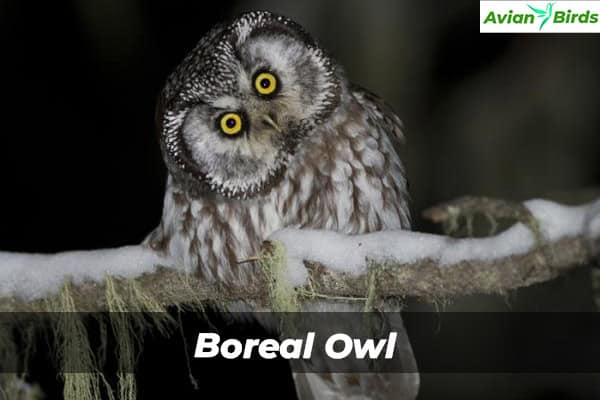
Must Visit: Owls in New Jersey
14. Northern Spotted Owl
- Scientific Name: Strix occidentalis caurina
- Size: 40–50 cm (16–20 in)
- Weight: 500–1,000 g (1.1–2.2 lb)
- Diet: Primarily small mammals, including rodents and birds
The northern spotted Owl, Which is 16 to 19 inches long and protected, faces threats. It lives in older forests in western Oregon, showing the need for conservation.

Where to See Owls in Oregon on Map
Finding owls in the wild is exciting and calming. Oregon has many places to see owls. We can visit national forests, grasslands, and coastal areas. This section will guide you to the best spots and share tips for spotting owls.

Best Locations for Owl Watching
- Hoyt Arboretum: A favourite spot for owl sightings. Its natural beauty and wildlife make it perfect for finding owls. Visitors often see barred owls on big-leaf maple trees.
- Mount Hood National Forest is Ideal for seeing different owl species. The forest’s dense trees and varied ecosystems are ideal for this.
- Malheur National Wildlife Refuge: Its abundant wildlife makes it a favourite for owl watchers. It’s especially good during migration seasons.
- Deschutes National Forest: Open areas and woods are perfect for spotting burrowing owls.
- Smith Rock State Park – Great for viewing Western Screech Owls.
- Columbia River Gorge – Home to Screech Owls and Great Horned Owls.
Tips for Spotting Owls in Their Natural Habitat
Using the right tips can make owl-watching better. Here are some tips to keep in mind:
- Timing: Dawn and dusk are best for spotting owls. Nights are great for hearing their calls.
- Listen for Calls: Owls have unique calls. Listening can help us find them.
- Be Patient and Quiet: Moving slowly and quietly helps avoid scaring them away. Patience is important.
- Look for Signs: Owl pellets, feathers, and droppings show they’re around. Looking at trees and the ground can help us find them.
With these tips and locations, we can see owls in Oregon. Seeing owls, like barred or spotted owls, makes wildlife watching magical.
Owl Conservation Efforts in Oregon
Owls in Oregon need our help, especially because of lost habitats and competition. These birds are key to a healthy ecosystem, but their homes are disappearing, putting them in danger.
We must save their habitats to keep owls like the Northern Spotted Owl alive. This owl’s numbers have dropped a lot.
Significance of Habitat Preservation
Keeping owl homes safe is very important. Old-growth forests, which take years to grow back, are crucial. The Northern Spotted Owl has been endangered since 1990.
Its numbers drop by up to 9% every year. This is because of lost homes and fights with Barred Owls. Barred Owls take over the Northern Spotted Owl’s space, making it harder for them to survive.
Community Involvement in Conservation
People in Oregon are working hard to save owls. Groups like the Bird Alliance of Oregon run sanctuaries for owls and other animals. Their 336-acre sanctuary near Yachats is a safe place for Northern Spotted Owls.
By joining in, we help protect owls and learn more about them. This supports efforts to save their homes.
Interesting Facts about Oregon’s Owls
Owls are fascinating creatures with unique traits. They play a big role in nature. In Oregon, different owl species show interesting behaviours and live in many places. We look at owl behaviour and myths, showing their importance in cultures.
Unique Behaviors and Habitats
In Oregon, owls show amazing adaptability. They have special ways of hunting and living. Here are some examples:
- Hunting Strategies: Owls like the Great Horned Owl hunt well at night. They use their sharp eyes and ears to find food.
- Nesting Habits: Northern Spotted Owls nest in old forests. They use the forest’s structure for safety and hiding.
- Mating Rituals: Many owls mate for life. They have special courtship behaviours, like flying together and making sounds.
Oregon’s different places offer homes for various owl species. Barn Owls live on farms, and boreal owls live in the wilds of Northeast Oregon.
Myths and Legends Surrounding Owls
Owls have been in myths for a long time. They are seen as wise because they hunt at night. They are also seen as signs of doom or messengers from the afterlife. Here are some myths:
- Native American Cultures: Many tribes see owls as protectors or tribal guardians. Others think they are omens.
- Greek Mythology: Owls are linked to Athena, the goddess of wisdom, making them symbols of intelligence.
- Modern Interpretations: Today, owls show up in books and movies. They symbolize mystery and wisdom.
These myths show how much people have always been drawn to owls. Learning about owl behaviour and myths helps us appreciate their role in our lives and nature.
How to Attract Owls to Your Backyard
Attracting owls to our backyards lets us see these amazing birds up close. We can make our outdoor spaces owl-friendly. This helps meet their needs. Here are some easy steps to make your backyard a great place for owls.
Creating a Suitable Habitat
To attract owls, focus on a few key things in your backyard:
- Plant Native Trees: Owls love natural places to hide. Planting trees native to your area helps. They offer cover and places to nest.
- Install Nesting Boxes: Special owl nesting boxes can draw them in. For example, screech owls might choose a box if they can’t find a natural nest.
- Ensure a Stable Food Source: Owls eat lots of rodents, especially when they’re raising young. Having small mammals and birds around can attract them. But don’t use rodenticides because they can harm owls too.
By thinking about these things, we can make our backyards welcoming to owls. This will not only improve our spaces but also help the owl population in our area.
| Feature | Benefit |
|---|---|
| Planting Native Trees | Provides cover and nesting sites. |
| Nesting Boxes | Encourages owl residency and breeding. |
| Stable Food Source | Attracts owls and supports their dietary needs. |
Read More🐦Related Articles:
| Common Shelduck: Colorful Coastal Duck Species |
| Hummingbirds in Texas |
| How to Keep Squirrels Out of Bird Feeders |
| Yellowhammer: Alabama’s Vibrant State Bird |
| Blue Parrot Species to Keep as Pets |
Conclusion
Owls in Oregon are more than just cool night birds. They are key to our environment. We’ve seen how different owls, like the northern spotted owl, show why we must protect them.
The sad news about the number of spotted owls tells us we must act fast. We need to care more about wildlife and help save it. This is a big job, but we can all do our part.
Protecting these amazing birds and their homes is our duty. We can help by joining conservation efforts and supporting local projects. This way, we keep Oregon’s owls and our planet safe.
By working together, we can save the owls that fly over us. Learning about and watching these birds makes our lives richer. It also helps make sure Oregon’s wildlife is here for the future.



